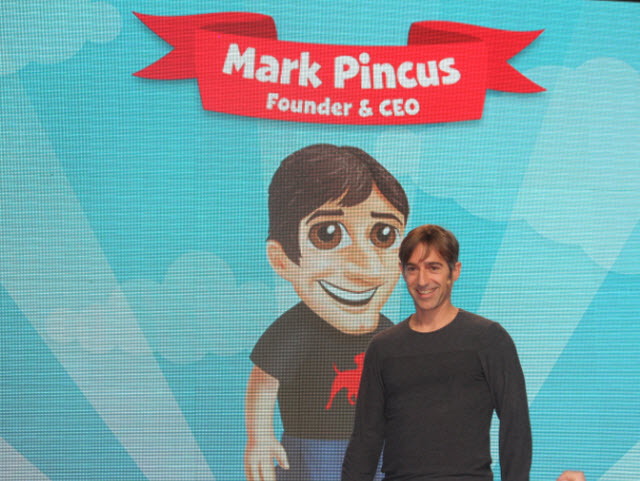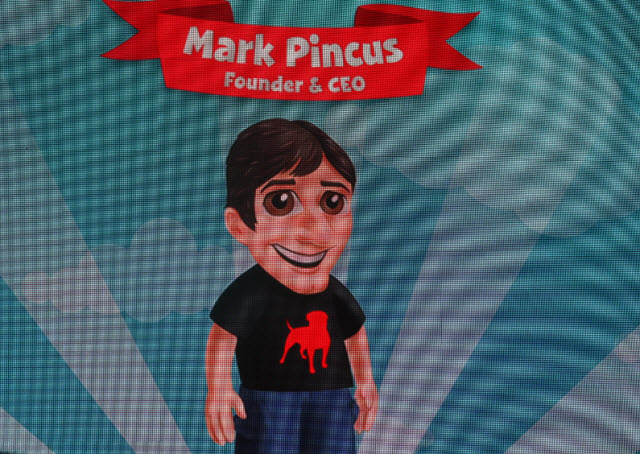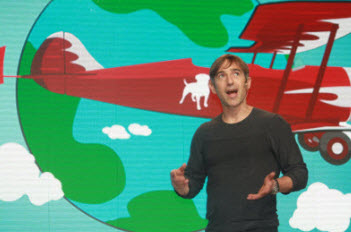 The long awaited IPO filing
The long awaited IPO filing
In late May, word leaked that Zynga had decided to file for an initial public offering. LinkedIn did so well with its IPO that Zynga was considering diving through the same open window for IPOs.
It was a false alarm. Then, again, in late June, rumors surfaced that the company might raise as much as $2 billion at a valuation of $15 billion to $20 billion. That would have made Zynga worth as much as three times the value of EA. Finally, Zynga filed registration papers with the Securities and Exchange Commission on July 1 to raise more than $1 billion. By that time, more than 80 tech companies had filed to go public as the window for IPOs opened wider.
For the rest of the game industry, there were mixed feelings. Those who hated Zynga had even more reason to whine about the injustice of a company with copycat origins having such a huge potential valuation. On the other hand, Zynga’s S1 revealed a treasure trove of information about the company that had been secret so far.
Zynga’s S1 said that in four years, the company generated more than $1.5 billion in bookings and it had amassed $995.6 million in cash. Its players created and stored more than 38,000 virtual times every second and spend 2 billion minutes a day with the service. The company had 2,268 employees, an audience of 148 million monthly unique users in 166 countries, and more than 232 million monthly active users (as some users play more than one game). On a daily basis, Zynga had 62 million daily active users, up from 24 million in September 2009. That was far more than any other social game company on Facebook and a reason why Zynga’s IPO was so highly anticipated. Those users interacted with each other 416 million times a day. Every day, Zynga processed 15 terabytes of game data.
Zynga revealed some other interesting metrics in the filing. It said that 2.5 percent of its users paid for virtual goods in games. That was only 7.7 million paying customers. In one sense, that meant that Zynga was vulnerable. If someone stole away those 7.7 million users, Zynga’s revenues would plummet. On the other hand, it was a huge opportunity. Zynga could double its revenues simply by increasing the number of payers to 5 percent. That was why Zynga was pursuing alternative monetization techniques. This kind of data was invaluable to the industry, and it only seemed that, because Zynga was going public, the industry was now learning critical things about itself.
One of the interesting parts of the filing was that Zynga noted that it was making more money from FarmVille than ever, even though that game had been launched in 2009. Expansions such as its FarmVille English Countryside helped boost revenues, and even after two years, FarmVille still had half of its peak users. By contrast, most console video games sold for a few weeks before gamers moved on to something new. So Zynga had done a good job getting a broad group of users and holding onto them.
Ad revenue was only about 5 percent of total revenue. Zynga had opportunities to increase that as well, but it had been wary ever since the ScamVille incident, which jeopardized Zynga’s relationship with consumers.
But Zynga didn’t go public right away. The SEC had questions and Zynga had to amend its filings to make the regulators happy. Then the stock market became increasingly unpredictable. Throughout the summer the news about the world economy started to turn sour. By Aug. 5, 2011, everything was looking sour again as European economic fears bled into everything else, knocking the stock market down again.
Some of the amended filings raised hell. Facebook game developers were furious when they found out about the tight relationship between Facebook and Zynga. The developers were angry because of a new disclosure by Zynga, filed with regulators, which showed that Zynga gets benefits that apparently no other game company gets. In the filing, Zynga said that it received a special deal when it agreed to support Facebook Credits, a new virtual currency from Facebook, a year ago. In that deal, Zynga agreed to give 30 percent of its virtual goods game revenues to Facebook, the standard fee for using Facebook Credits.
In exchange, Facebook had agreed to help Zynga hit growth targets for its games. Facebook did not, as initially reported, agree to kick back revenue to Zynga from ads placed by Facebook alongside Zynga games on Facebook. Facebook said there was a deal to share ad revenue with Zynga if it chose to move its Facebook games off of Facebook, but that ad deal never kicked in, according to a statement by Facebook. The 30 percent fee is what every developer pays, and Facebook told developers that everyone was treated the same.
But other developers were upset about Facebook’s support of Zynga’s growth targets. Facebook reportedly (in a redacted section) promises growth by the end of the five-year agreement, according to a source familiar with the agreement.
“It’s an outrage,” said an executive at one Facebook game developer, who spoke on condition of anonymity, at last week’s Casual Connect game conference in Seattle, where the Facebook-Zynga deal was the subject of much conversation. “It means we can’t move to Google+ soon enough.”
“We all knew Zynga had contractual advantages, but the extent of it makes Facebook a tough platform for everyone else,” said Trip Hawkins, chief executive of Digital Chocolate. “Policy changes have made revenue and margins more challenging this year, so it is a bitter pill for all of us to find out that the market is neither competitive nor fair. Their relationship could not be more complicated. It’s like a bad marriage that is staying together for the money. You don’t get the feeling that either side really feels happy or free. Ironically, they could both use more real friends.”
In conversations with game developers, Facebook tried to calm developers down and explain that it really doesn’t favor Zynga in a way that is unfair to the rest of the development community. There were, in fact, times when Zynga hated the Facebook-Zynga relationship.
Meanwhile, Zynga’s on-again, off-again IPO started becoming a joke. Lots of IPOs were yanked altogether starting in August. Finally, rumors surfaced that Zynga would go public in November. Then it became after Thanksgiving. But first, Zynga decided to hold its first-ever press conference at its new headquarters, a high-rise building that could fit 1,700 employees and was affectionately named “the doghouse.”
The Big Bang
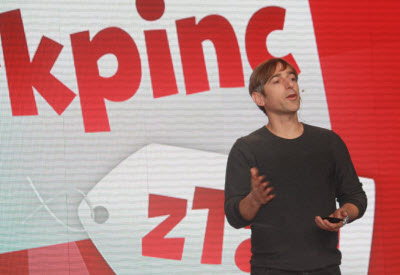 Zynga’s huge staff of what would shortly become 2,700 employees needed a lot of space, and many of them moved into the old Sega U.S. headquarters building in San Francisco’s South of Market neighborhood. But the question arose: Zynga had only launched a handful of games in 2011. What were all of those game developers doing? If it took six weeks to make FarmVille with a staff of maybe 10 people, then Zynga theoretically now had enough developers to make around 1,600 FarmVille games in a year.
Zynga’s huge staff of what would shortly become 2,700 employees needed a lot of space, and many of them moved into the old Sega U.S. headquarters building in San Francisco’s South of Market neighborhood. But the question arose: Zynga had only launched a handful of games in 2011. What were all of those game developers doing? If it took six weeks to make FarmVille with a staff of maybe 10 people, then Zynga theoretically now had enough developers to make around 1,600 FarmVille games in a year.
Of course, the ante for game development was getting higher. It was taking longer to make games (FrontierVille had taken around a year to get right), and the teams were getting bigger. Zynga never told anyone publicly how many people it took to do games. It considered that information to be a competitive secret. But a lot of observers thought Zynga had too many people.
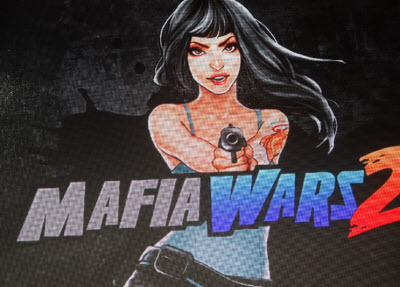 VentureBeat has learned that Mafia Wars 2, the sequel to one of Zynga’s most successful games, took 80 people about 18 months to complete. Zynga announced the game on Sept. 20 and launched it on Oct. 10. The title featured 3D Flash animations, but it was still mostly a two-dimensional game. The game grew to more than 17 million users, but then the audience started dropping off.
VentureBeat has learned that Mafia Wars 2, the sequel to one of Zynga’s most successful games, took 80 people about 18 months to complete. Zynga announced the game on Sept. 20 and launched it on Oct. 10. The title featured 3D Flash animations, but it was still mostly a two-dimensional game. The game grew to more than 17 million users, but then the audience started dropping off.
But finally, on Oct. 11, it was evident that those employees had been busy. The event was like Zynga’s own little E3, the big video game trade show. At a press conference in its sprawling cafeteria (with everything from Zynga french fries to cafe mochas offered for free), Pincus unveiled 10 mobile and social game initiatives. Not all of the titles were ready to launch, but it was the sort of Big Bang you expected out of talented development teams that had been busy toiling in secrecy.
The event was orchestrated to give the press, analysts and investors a taste of what was to come on a number of fronts. Each initiative showed that Zynga was hammering a way at the concerns investors might have about its ability to stay on top. Mark Pincus, the would-be multi-billionaire, made his first appearance on a stage in months. In the past, he hadn’t been careful or scripted. But that day, he was pretty polished.
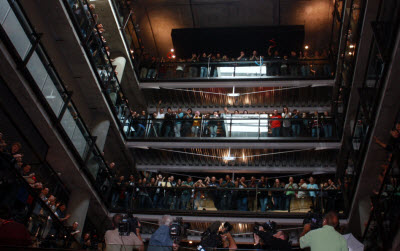 He started out with a story about the good old days at Zynga in 2007, when the company first started making games for Facebook. He said the team hired some students from the Culinary Academy across the street to create food in the company’s small headquarters. One of those students, Amelia, later became the fictional head chef in Zynga’s Cafe World game, and she was now the head chef. He asked the journalists to turn around in their seats and look up. Thereupon they saw rows of employees standing on the open walkways of the building’s upper levels. Pincus recognized the staff and apologized for taking away their cafeteria for a day.
He started out with a story about the good old days at Zynga in 2007, when the company first started making games for Facebook. He said the team hired some students from the Culinary Academy across the street to create food in the company’s small headquarters. One of those students, Amelia, later became the fictional head chef in Zynga’s Cafe World game, and she was now the head chef. He asked the journalists to turn around in their seats and look up. Thereupon they saw rows of employees standing on the open walkways of the building’s upper levels. Pincus recognized the staff and apologized for taking away their cafeteria for a day.
Pincus didn’t hog the stage. Pincus laid the groundwork for all of the presentations by senior Zynga executives. He allowed each domain expert to get on stage to describe their own games. When he introduced the company’s chief operating officer, John Schappert, who was recruited away from Electronic Arts, he said Schappert had fulfilled Pincus’s goal of finding his own replacement.
Pincus said, “We challenge ourselves every day to … get you guys to play. You are busy. You are on the move. You don’t have time to sit and play games. But we really think play is this macro theme and activity that we all need to fit back into our lives. Everything behind what we are building is this mission to build a platform for play.”
Pincus said Zynga’s basic design principles focus on the FTUE, or first-time user experience. The best opportunity for Zynga to make an impression on a player is in the first three clicks of a game. He said that in casual games, you have to sell the player on the whole game in the first three clicks and that five to 15-minute experiences of playing should “feel like a meal.” You shouldn’t have to change your routine for Zynga’s sake.
Zynga Direct and Project Z
At the press conference, Pincus mentioned one new initiative, Zynga Direct, which the company has been working on for two years. It’s a platform for creating more social interactions around Zynga games, whether they’re played on the web or on mobile devices. Schappert later described a part of Zynga Direct, dubbed Project Z, as an online destination where Zynga players can go to play Zynga games. Schappert said Project Z was a “social gaming playground,” where players could play under their own gamertag names. But he didn’t go into much detail, either.
Project Z would be an independent website that exclusively hosted Zynga games. It would use Facebook’s connect feature to build a social graph of your friends on Project Z. You would then be able to go directly to Project Z to play Zynga games instead of playing them on Facebook. It was Zynga’s own platform, like Microsoft’s Xbox Live online gaming service. And on this platform, Zynga wouldn’t have to pay 30 percent of the proceeds to anyone.
“Project Z is a Facebook Connect platform that leverages your Facebook friends to play in an environment tailored with just your friends,” Schappert said. “We learn a lot more about our players, not just from stats but from talking to them, and this is what they wanted.”
The world hadn’t heard about these off-Facebook projects since more than a year earlier, when Zynga was threatening to move off Facebook in the showdown over Facebook Credits. Zynga had never stopped doing work on these projects, even though it established a detente with Facebook. But these projects were stopped and started multiple times. The problem was that the job amounted to Zynga creating its own social network. And the difficult thing about that was that Facebook had succeeded in creating its own broad-based social network that was heading toward 800 million members. Zynga needed to figure out how to differentiate its own social network enough to draw Zynga fans to a separate web site.
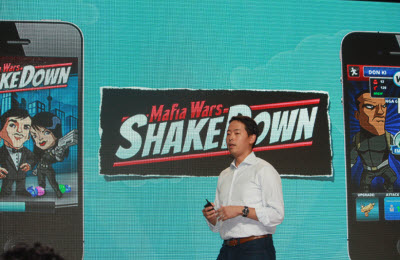 Now, it appeared, Zynga really had been serious when it said it wanted to diversify beyond Facebook so that it could have a direct relationship with its gamers without having any intermediaries in between. It wasn’t just a paper tiger, meant to threaten Facebook.
Now, it appeared, Zynga really had been serious when it said it wanted to diversify beyond Facebook so that it could have a direct relationship with its gamers without having any intermediaries in between. It wasn’t just a paper tiger, meant to threaten Facebook.
David Ko, head of mobile, came on stage to describe five new mobile games. Mobile could be a bigger market than Facebook games, so Zynga had to try to grab market share in that market in order to keep growing fast, diversify beyond Facebook, and continue executing well prior to going public. Ko had spent $53 million on Newtoy and was acquiring more and more mobile game developers.
Zynga also showed off new Facebook games like Zynga Bingo, Hidden Chronicles, and CastleVille. And it said that Mafia Wars 2 would now run on Google+. The whole press event was meant to show that Zynga’s employees had been busy and the company was now spreading out in all directions.
Pincus closed the event saying that Zynga is committed to one vision that hasn’t changed since the founding: ”We want to be the biggest macro bet on social gaming.”
“We believe that this is the way everyone around the world will want to embrace play in their lives,” he said. “We know it is early. We know it is primitive.” He said social gaming will come to life in the next few years and will become more mobile, so that you will get something like a World of Warcraft experience in five or fifteen minutes.”
